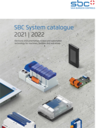-
Welcome to the support site
If you know our products and are looking for technical information you are at the right place here.
If you want to get an overview about our company, news and events please refer to www.saia-pcd.com.



Security Upgrade for PCD Controllers
New Firmwareversions offering improvements in IT-Security for PCD Controllers are ready to download. >> More Infos
Connection of PCD controllers directly to the Internet
Reduce the risk of potential intruders in automation systems. Take appropriate protective measures in your PCD control. >>More Infos
New BACnet FW for Rev. 14
Tuesday, 08. May 2018A new BACnet FW for Rev. 14 is available, that corrects a few problems. We recommend to use this FW.
The FW package can be downloaded here.
We also strongly recommend to use minimum PG5 2.2.235 or newer if you work with Rev. 14.
DDC Suite 2.7 New Version with Email Alarming available
Friday, 16. March 2018A new version of the DDC Suite library and it´s corresponding new templates are available here.
The new version now supports Alarming 2 with groups and priorities and does automatically generate Alarmtexts that can be send by Email or SMS without engineering effort.
PG5 2.3.113 is available on the support homepage as well in the SBC PG5 update manager
Tuesday, 20. February 2018PG5 2.3.113 can be downloaded from the support homepage as well in the SBC PG5 update manager.
Information's about the new features and the modifications are available on the support homepage
New Visi.Plus Setup 1.7.104.39 available
Wednesday, 31. January 2018A new version of Visi.Plus is available on the Support homepage. Main improvements are the handling of iPads in HTML5 and Symbol Import improvements.
PG5 2.2.235 is available on the support homepage as well in the SBC PG5 update manager
Thursday, 21. December 2017PG5 2.2.235 can be downloaded from the support homepage as well in the SBC PG5 update manager.
Information's about the modification are available on the support homepage







